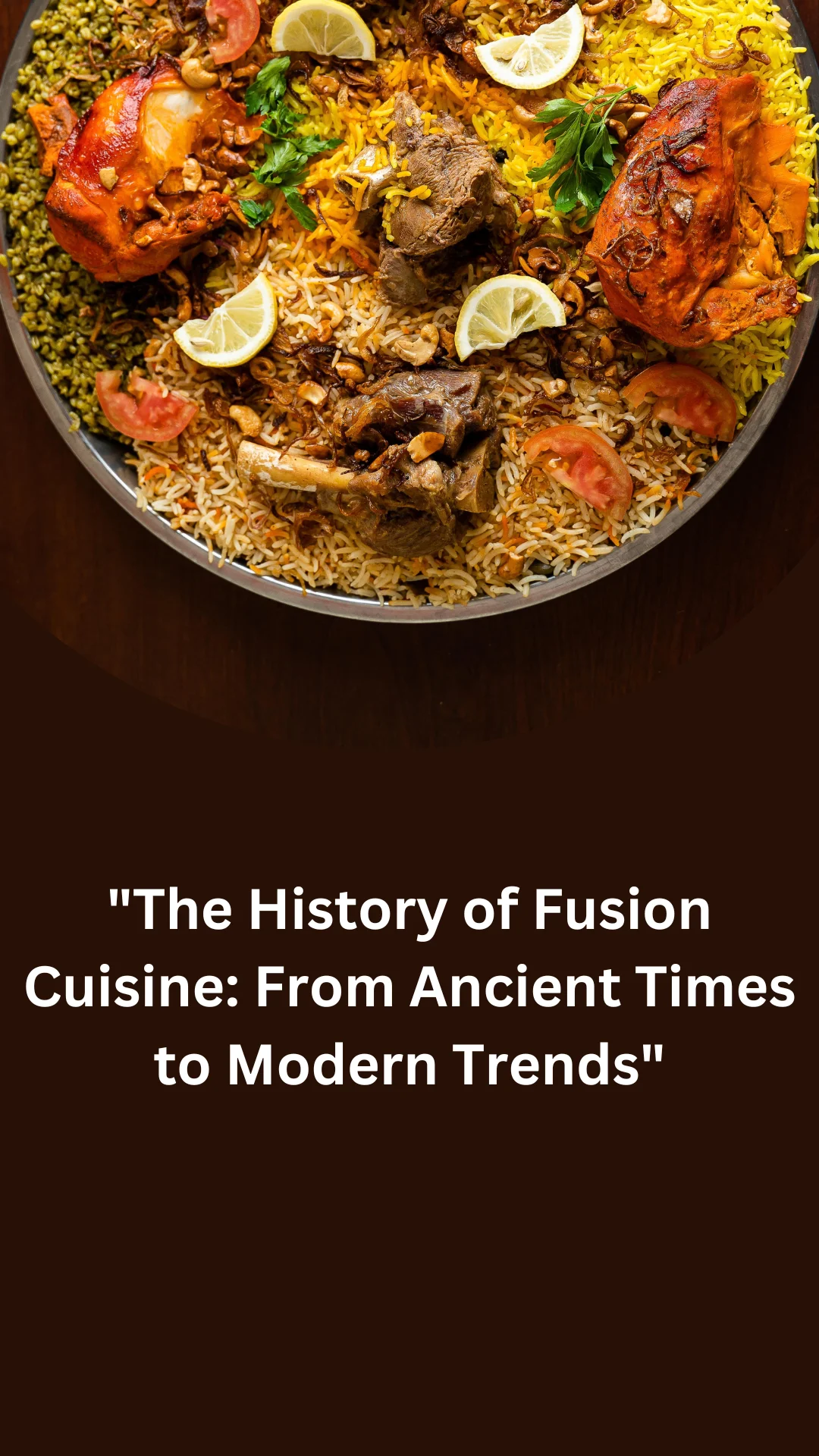Fusion cuisine, a culinary genre characterized by the blending of ingredients and techniques from diverse culinary traditions, is often perceived as a modern phenomenon. However, its origins trace back to ancient times, reflecting humanity’s long history of cross-cultural exchanges and culinary experimentation. This article explores the evolution of fusion cuisine from its historical roots to contemporary trends, revealing how the concept of combining diverse culinary elements has been a part of our global gastronomic journey.
Ancient Beginnings: Early Cross-Cultural Exchanges
- Trade Routes and Culinary Exchanges: The roots of fusion cuisine can be traced back to ancient trade routes, such as the Silk Road and maritime routes connecting Europe, Asia, and Africa. These routes facilitated the exchange of not just goods but also culinary practices and ingredients. For instance, the introduction of spices from the Indian subcontinent to the Middle East and Europe, and the integration of these spices into local dishes, represents an early form of fusion cooking.
- Ancient Empires and Culinary Integration: Ancient empires like Rome and Persia were known for their diverse culinary influences. The Roman Empire’s expansion introduced new ingredients and cooking techniques from conquered regions, leading to the integration of Greek, North African, and Middle Eastern flavors into Roman cuisine. Similarly, the Persian Empire’s vast reach brought together diverse culinary traditions from across its territories, creating a rich tapestry of fusion flavors.
Medieval and Renaissance Innovations
- Medieval Spice Trade: The medieval spice trade, which included the exchange of spices like pepper, cinnamon, and cloves, played a significant role in the development of fusion cuisine. European chefs began incorporating these exotic spices into traditional dishes, transforming medieval European cuisine with new and exciting flavors from Asia and the Middle East.
- Renaissance Culinary Exploration: The Renaissance period marked a surge in exploration and cultural exchange, which extended to the culinary world. The Columbian Exchange, which followed Christopher Columbus’s voyages, introduced new ingredients such as tomatoes, potatoes, and peppers to Europe, while European ingredients and techniques influenced the cuisines of the Americas. This cross-pollination of ingredients and culinary practices laid the groundwork for future fusion cuisine.
The Evolution of Fusion Cuisine: 19th to Early 20th Century
- Colonial and Global Influences: The age of colonialism brought about significant culinary exchanges. European colonizers encountered and integrated local ingredients and cooking techniques from Africa, Asia, and the Americas into their own cuisines. For example, Indian spices began to influence British cooking, leading to the development of dishes like chicken tikka masala. Similarly, the fusion of Caribbean ingredients with European techniques created unique Caribbean cuisine.
- Immigrant Influence and Culinary Diversity: In the 19th and early 20th centuries, waves of immigration brought diverse culinary traditions to new regions, leading to the creation of hybrid dishes. In the United States, the blending of various immigrant cuisines, including Italian, Chinese, and Jewish culinary traditions, contributed to the evolution of American cuisine with innovative fusion dishes.
Modern Trends: The Rise of Contemporary Fusion Cuisine
- Post-World War II Innovation: The post-World War II era saw a rise in culinary experimentation and the formalization of fusion cuisine as a culinary genre. Influential chefs like Wolfgang Puck and Nobu Matsuhisa played pivotal roles in popularizing fusion cuisine. Puck’s California cuisine, which combined French techniques with Asian ingredients, and Matsuhisa’s Japanese-Peruvian fusion, were instrumental in bringing fusion cuisine to the forefront of the culinary world.
- Globalization and Culinary Cross-Pollination: The late 20th and early 21st centuries witnessed the globalization of food culture, facilitated by increased travel and communication. This era saw the rise of diverse fusion dishes that blend elements from various global cuisines. The combination of Korean barbecue with Mexican tacos (Korean BBQ tacos) and the integration of traditional sushi with American ingredients (sushi rolls) exemplify the innovative spirit of modern fusion cuisine.
- Contemporary Fusion Cuisine: Today’s fusion cuisine continues to evolve, driven by a desire for creativity and exploration. Chefs around the world experiment with blending flavors, techniques, and ingredients from different culinary traditions, resulting in exciting new dishes. The focus has shifted towards more refined and intentional fusion, with an emphasis on cultural sensitivity and respect for the origins of ingredients and techniques.
Challenges and Considerations
- Cultural Sensitivity: As fusion cuisine grows, it is essential to approach it with cultural sensitivity. Ensuring that fusion dishes respect and honor the origins of the culinary elements used is crucial in avoiding cultural appropriation and maintaining authenticity.
- Balancing Innovation and Tradition: While innovation is a key aspect of fusion cuisine, it is important to strike a balance between creativity and respect for traditional culinary practices. Successful fusion dishes should enhance rather than overshadow the essence of the original cuisines involved.
Conclusion
The history of fusion cuisine reveals a rich tapestry of culinary innovation and cross-cultural exchange. From ancient trade routes and empires to modern culinary experimentation, the blending of diverse culinary traditions has been a recurring theme throughout history. As fusion cuisine continues to evolve, it will undoubtedly embrace new trends and influences, reflecting our ever-changing global culinary landscape. By understanding the historical context of fusion cuisine, we gain a deeper appreciation for its role in shaping the future of gastronomy and celebrating the diversity of global flavors.
